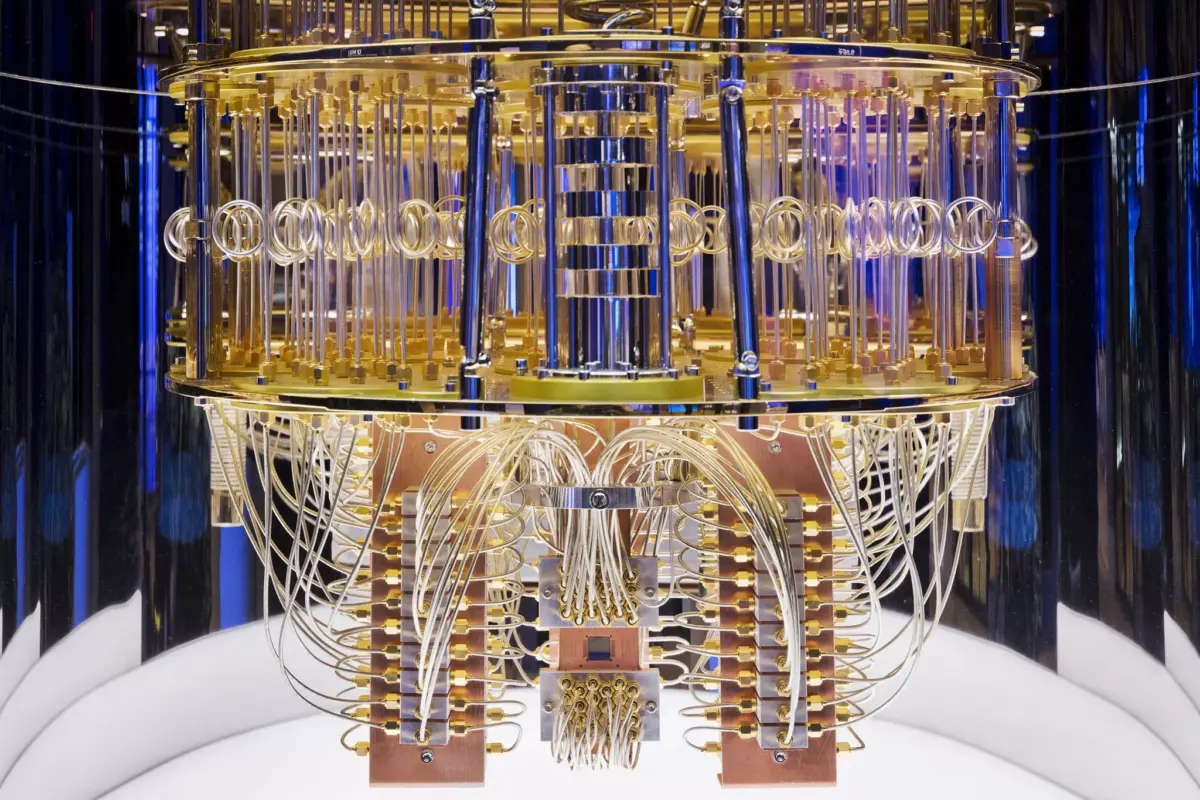A era da computação quântica com impacto prático na vida real pode estar mais próxima do que se imaginava, mas ainda enfrenta obstáculos importantes. Uma nova pesquisa da Economist Impact revelou que 83% dos profissionais do setor acreditam que a chamada “utilidade quântica” será alcançada em até uma década.
O que é a utilidade quântica?
Utilidade quântica é o momento em que computadores quânticos começam a resolver problemas reais de forma mais eficiente que computadores clássicos.
Diferente da “supremacia quântica”, que marca uma vantagem em tarefas específicas de laboratório, a utilidade quântica indica ganhos práticos em áreas como saúde, finanças e logística.
O conceito ainda gera confusão: muitas vezes é usado como sinônimo de “vantagem quântica”, embora se refira ao uso efetivo da tecnologia em cenários do mundo real. Para alcançar essa fase, é preciso superar grandes desafios, como erros de hardware e limitações na correção de falhas quânticas.
A diferença conceitual é tamanha que a própria Economist Impact definiu utilidade quântica como o momento em que “os computadores quânticos superam desafios de hardware e correção de erros para performar melhor do que os clássicos”.
Otimismo com cautela
Apesar dos desafios, um terço dos entrevistados pela pesquisa se mostra ainda mais otimista, prevendo que a utilidade quântica pode chegar entre um e cinco anos. É o caso da startup finlandesa IQM, que almeja alcançar esse marco já no próximo ano.
Outros gigantes da tecnologia também têm dado seus palpites. Em fevereiro, o CEO do Google, Sundar Pichai, afirmou que computadores quânticos úteis na prática devem surgir entre cinco e dez anos.
Já Jensen Huang, da NVIDIA, adotou uma postura mais conservadora: em janeiro, declarou que a tecnologia ainda está a pelo menos 15 anos de distância — o que causou uma queda nas ações de empresas do setor quântico.
Desafios para o avanço da computação quântica
A pesquisa revelou que mais da metade dos profissionais acredita que mal-entendidos sobre o que é a computação quântica têm atrapalhado o desenvolvimento da área.
No entanto, o problema mais urgente está longe de ser apenas a percepção pública: 80% apontaram os desafios técnicos — especialmente a correção de erros — como o principal obstáculo à utilidade quântica.
Outro grande entrave é a escassez de profissionais qualificados. Cerca de 75% dos entrevistados citaram a falta de talentos como uma barreira crítica. O crescimento acelerado do setor criou uma verdadeira corrida por especialistas, com startups e grandes corporações disputando um grupo limitado de profissionais com domínio em física quântica, engenharia, ciência da computação e matemática avançada.
A computação quântica promete resolver problemas que estão muito além do alcance dos supercomputadores atuais, mas exige superar um dos maiores desafios da ciência moderna: controlar o mundo subatômico com precisão
Para que serve a computação quântica?
A computação quântica é eficaz em problemas que envolvem o comportamento de sistemas extremamente pequenos — como átomos, elétrons e moléculas. Como ela opera com as leis da mecânica quântica, seu ambiente natural é o mundo subatômico.
Por isso, suas aplicações mais promissoras estão em áreas onde a escala é microscópica e as variáveis são complexas demais para os computadores tradicionais.
Entre os principais usos esperados estão:
- Descoberta de medicamentos: simular interações entre moléculas de forma precisa, acelerando o desenvolvimento de novos tratamentos.
- Design de materiais: criar compostos inéditos e mais eficientes desde a estrutura atômica, com aplicações em energia, eletrônica e sustentabilidade.
- Química avançada: prever reações químicas com mais exatidão, o que pode revolucionar processos industriais e ambientais.
- Otimização complexa: resolver problemas logísticos gigantescos — como rotas de entrega, organização de tráfego ou gestão de redes de energia — mais rápido e melhor que qualquer supercomputador atual.
- Finanças e modelagem de risco: processar grandes volumes de dados incertos para prever cenários econômicos ou financeiros complexos.
Vale destacar que essa tecnologia não é voltada para uso doméstico ou pessoal. Ao contrário do que muitos imaginam, não se trata de “um computador muito mais rápido para tarefas ou ‘rodar Crysis’”.
Seu verdadeiro valor está em aplicações altamente técnicas, em indústrias específicas, onde os computadores clássicos simplesmente não conseguem dar conta.
Leia também:
- Phasecraft: startup britânica afirma ter multiplicado por 10 a eficiência das simulações quânticas
- NVIDIA criará um Centro de Pesquisa de Computação Quântica Acelerada
- China injeta US$ 55 bi em tecnologia para dominar semicondutores, IA e computação quântica
Perspectivas e riscos
O potencial da computação quântica é imenso. Entre as aplicações mais promissoras estão a simulação de moléculas para descoberta de novos medicamentos, o desenvolvimento de materiais inéditos a partir do nível atômico, além da resolução de problemas complexos de otimização em setores como logística e finanças.
Por outro lado, especialistas alertam para os riscos. Uma vez que computadores quânticos suficientemente potentes forem desenvolvidos, será possível quebrar os sistemas de criptografia que protegem a internet atualmente. Esse evento é conhecido como Q-Day — e já é tema de debate entre governos, empresas e especialistas em segurança cibernética.
A corrida pela utilidade quântica já começou — e, embora o futuro ainda esteja envolto em incertezas, o potencial transformador dessa tecnologia é inegável.
Fonte: The Next Web




